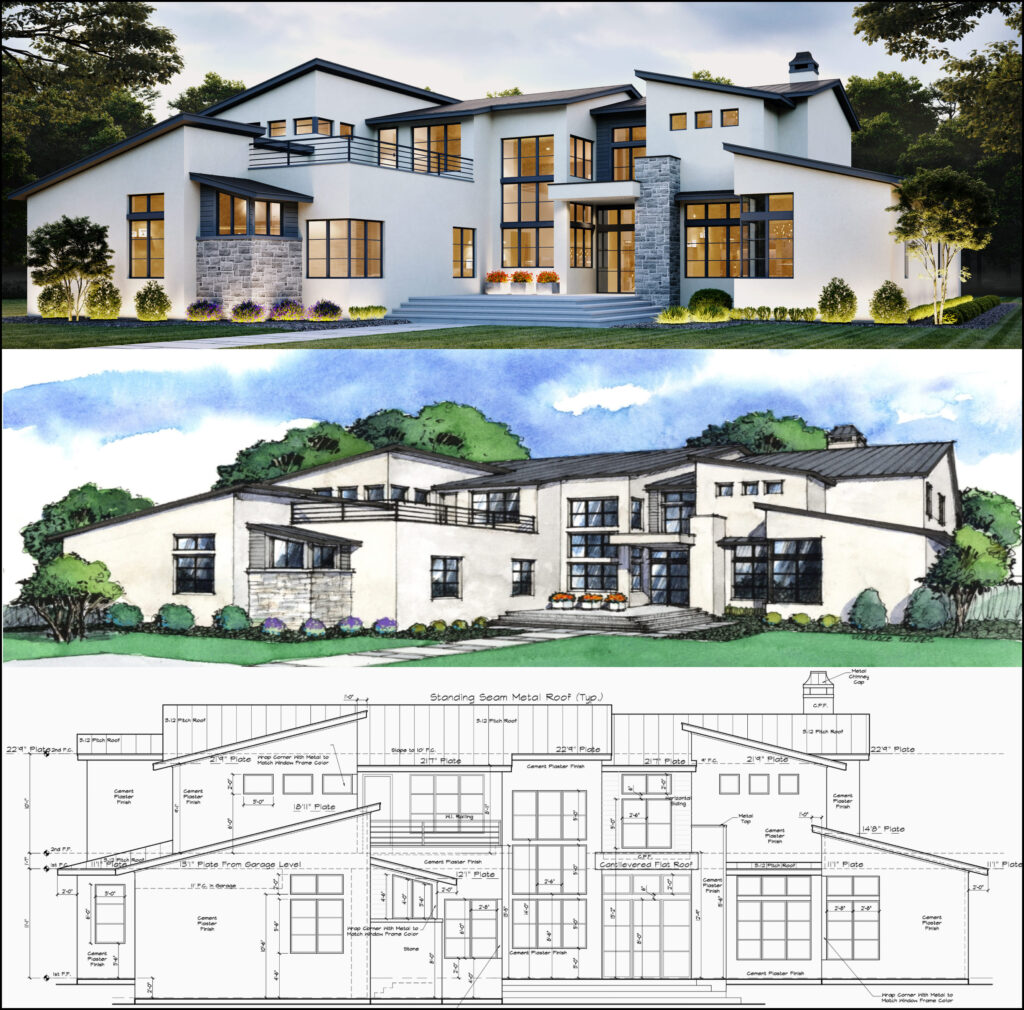Just How CDA Architects Incorporate Eco-Friendly Practices in Architectural Projects
Just How CDA Architects Incorporate Eco-Friendly Practices in Architectural Projects
Blog Article
The Impact of Technical Developments on the Layout Practices of Contemporary Architects
The rapid evolution of technological tools has substantially improved the layout landscape for modern engineers, fostering unprecedented levels of development and sustainability. Checking out these characteristics reveals a nuanced interaction in between modern technology and standard style methods, triggering a better evaluation of what the future holds for architectural techniques.
Development of Architectural Equipment
Just how have building tools changed the style and construction procedures over the centuries? The development of building tools has significantly influenced the efficiency, precision, and imagination of layout and building.
With the advent of the Renaissance, the intro of the compass and the protractor marked a crucial shift. These tools allowed architects to accomplish better accuracy in their layouts, helping with the appearance of more detailed and proportionate structures. The Industrial Change additionally transformed building experiment the introduction of mechanized devices and products, enabling larger and a lot more enthusiastic projects.
In the 20th century, the advancement of computer-aided layout (CAD) software transformed the landscape when again, providing designers with unmatched capabilities in modeling and visualization. Today, advanced devices such as Structure Information Modeling (BIM) and parametric style software application remain to push the limits of architectural technology, enabling a much more incorporated strategy to layout and construction processes.
Boosted Cooperation in Design
As modern technology remains to develop, boosted cooperation in layout has become a cornerstone of modern building technique. The assimilation of electronic devices such as Building Information Modeling (BIM), cloud-based platforms, and progressed visualization software program has transformed the means engineers, engineers, and stakeholders interact throughout the design process. These tools facilitate real-time interaction, enabling teams to share concepts, adjustments, and feedback quickly, despite geographical area.

Additionally, interdisciplinary partnership has actually been streamlined through these technological advancements, enabling designers to function a lot more carefully with various other specialists, such as city organizers and ecological specialists. The result is a more natural strategy to develop that thinks about numerous perspectives and competence. Eventually, improved partnership in style is not just a pattern; it is essential for creating ingenious, practical, and cosmetically pleasing style in a progressively intricate globe.
Sustainability With Innovation
Sustainability in architecture has actually progressively become intertwined with technical innovation, driving the market toward eco accountable techniques - cda architects. Contemporary designers are leveraging advanced innovations to minimize ecological influence while improving the efficiency of buildings. One noticeable example is using Building Info Modeling (BIM), which enables for precise preparation and resource allowance, reducing waste throughout construction and promoting energy effectiveness throughout a structure's lifecycle
Furthermore, clever materials and energy-efficient systems are being incorporated into designs to maximize resource use. Technologies such as solar batteries and environment-friendly roof systems harness renewable resource resources, contributing to minimized carbon impacts. In addition, the application of expert system in design processes enables designers to replicate and examine energy consumption, assisting decisions toward even more lasting outcomes.
The combination of sustainable innovations not only straightens with worldwide ecological objectives but likewise meets an enhancing need her comment is here from customers for environmentally friendly options. As engineers welcome these innovations, the emphasis changes in the direction of producing areas that are not only aesthetically pleasing but also functionally lasting, consequently redefining the requirements of contemporary architecture. By doing this, modern technology offers as a driver for sustainability, enabling engineers to make buildings that respect and boost the native environment.
Obstacles in Execution
While technological advancements you can try here in style hold excellent guarantee for enhancing sustainability, their execution typically encounters substantial difficulties - cda architects. One primary barrier is the high knowing contour connected with new modern technologies. Architects and building and construction professionals might require considerable training to successfully utilize sophisticated software and devices, which can postpone job timelines and increase prices
Furthermore, the assimilation of emerging modern technologies, such as Building Details Modeling (BIM) and sustainable products, typically necessitates collaboration throughout multidisciplinary teams. This cooperation can be impeded by differences in proficiency, operations, and communication styles, leading to possible conflicts and inadequacies.
Financial constraints additionally complicate the fostering of cutting-edge technologies. Several building companies, especially smaller sized ones, might lack the sources to spend in advanced devices, restricting their ability to contend with bigger firms that can pay for such investments.
In addition, governing structures and building ordinance might not maintain speed with technical improvements, developing obscurity and prospective conformity problems. This challenge can dissuade architects from fully embracing brand-new modern technologies, as the threat of non-compliance find might exceed the benefits. As a result, attending to these application difficulties is important for the successful integration of technical improvements in contemporary architectural practices.
Future Trends in Architecture
The obstacles connected with the application of new modern technologies in design have prompted a reevaluation of future fads within the market. As designers browse concerns such as sustainability, urbanization, and social equity, they are significantly embracing ingenious innovations to improve design performance and ecological performance.
One noticeable fad is the combination of man-made intelligence (AI) in the layout procedure. AI devices can examine large datasets to educate style decisions, improving both creativity and capability. Likewise, Structure Info Modeling (BIM) remains to develop, enabling real-time partnership amongst stakeholders and assisting in structured job management.
Sustainable layout techniques are also getting energy, with architects focusing on flexible reuse and regenerative layout principles that reduce resource intake and waste. The incorporation of wise products and renewable energy resources will better enhance the resilience of structures in the face of climate change.

Verdict
Technical advancements have considerably improved building style methods, assisting in boosted accuracy, cooperation, and sustainability. The assimilation of devices such as Structure Details Modeling and parametric layout software program, alongside artificial intelligence and clever products, encourages engineers to resolve intricate obstacles more effectively.
Report this page